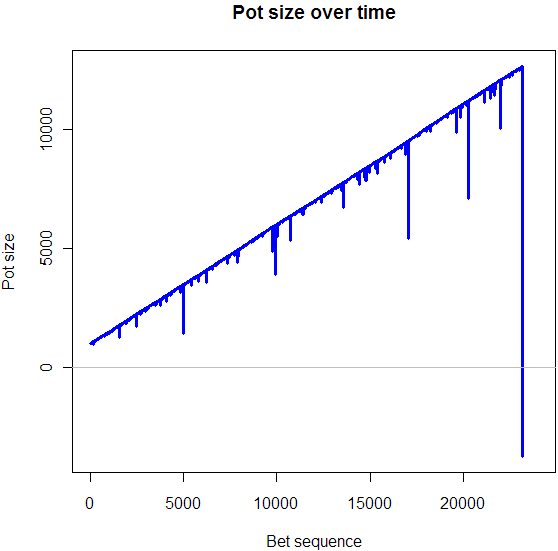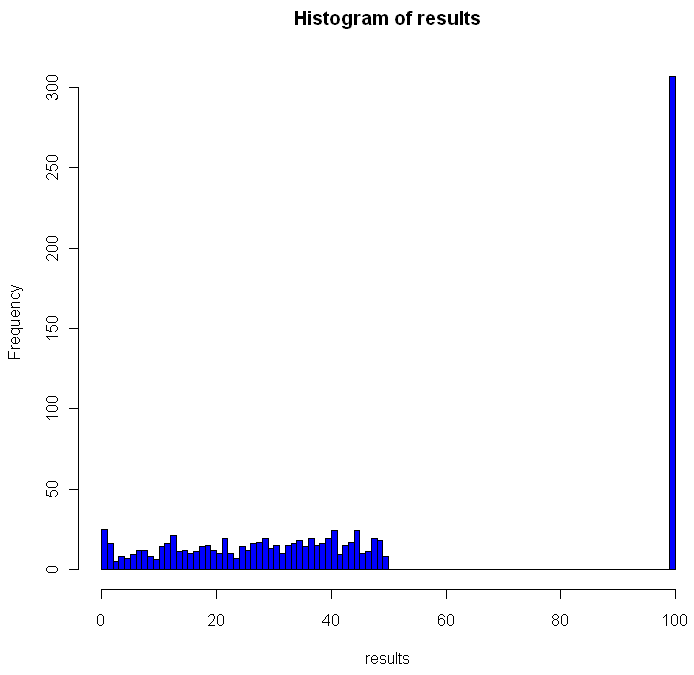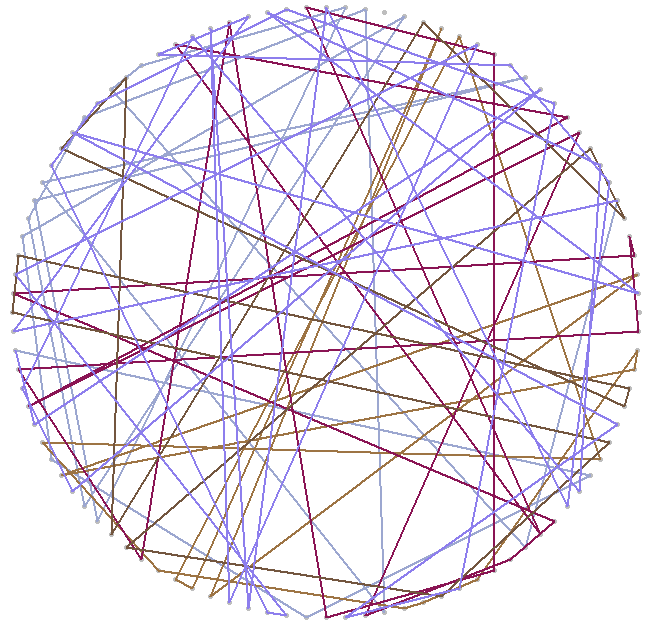Alright, I better start with an apology for the title of this post. I know, it’s really bad. But let’s get on to the good stuff, or, perhaps more accurately, the really frightening stuff. The plot shown at the top of this post is a simulation of the martingale betting strategy. You’ll find code for it here. What is the martingale betting strategy? Imagine you go into a a mythical casino that gives you perfectly fair odds on the toss of a mythically perfect coin. You can bet one dollar or a million. Heads you lose the amount you bet, tails you win that same amount. For your first bet, you wager $1. If you win, great! Bet again with a dollar. If you lose, double your wager to $2. Then if you win the next time, you’ve still won $1 overall (lost $1 then won $2). In general, continue to double your bet size until you get a win, then drop your bet size back down to a dollar. Because the probably of an infinite loosing streak is infinitely small, sooner or later you’ll make $1 off of the sequence of bets. Sound good?
The catch (you knew there had to be a catch, right?) is that the longer you use the martingale strategy, the more likely you are to go broke, unless you have an infinitely large bankroll. Sooner or later, a run of heads will wipe out your entire fortune. That’s what the plot at the beginning of this post shows. Our simulated gambler starts out with $1000, grows her pot up to over $12,000 (with a few bumps along the way), then goes bankrupt during a single sequence of bad luck. In short, the martingale stagy worked spectacularly well for her (12-fold pot increase!) right up until the point where it went spectacularly wrong (bankruptcy!).
Pretty scary, no? But I haven’t even gotten to the really scary part. In an interview with financial analyst Karl Denninger, Max Keiser explains the martingale betting strategy then comments:
“This seems to be what every Wall Street firm is doing. They are continuously loosing, but they are doubling down on every subsequent throw, because they know that they’ve got unlimited cash at their disposal from The Fed… Is this a correct way to describe what’s going on?
Karl Denninger replies. “I think it probably is. I’m familiar with that strategy. It bankrupts everyone who tries it, eventually…. and that’s the problem. Everyone says that this is an infinite sum of funds from the Federal Reserve, but in fact there is no such thing as an infinite amount of anything.”
Look at the plot at the beginning of this post again. Imagine the top banking executives in your country were paid huge bonuses based on their firm’s profits, and in the case of poor performance they got to walk away with a generous severance package. Now imagine that these companies could borrow unlimited funds at 0% interest, and if things really blew up they expected the taxpayers to cover the tab through bailouts or inflation. Do you think this might be a recipe for disaster?





